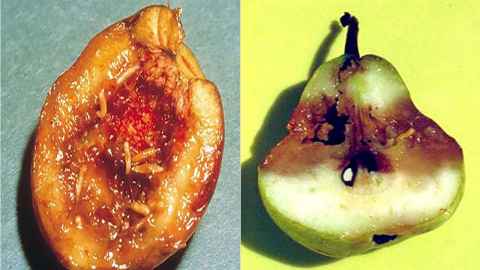Why we should celebrate NZ’s latest fruit fly detection
22 February 2019
Opinion: Fruit fly detections are really New Zealand’s biosecurity system operating at its best, writes Biological Sciences Professor Jacqueline Beggs.
![A single Queensland fruit fly (Bactrocera tryoni) was recently detected in Devonport. A full scale response has been triggered as it is regarded as a serious pest [Image: Bugwood.org used by permission Plant Health Australia].](/content/auckland/en/news/2019/02/22/why-we-should-celebrate-fruit-fly-detection/_jcr_content/leftpar/imagecomponent/image.img.480.low.jpg/1550778072924.jpg)
About to bite into that luscious, juicy taste of summer, a tree-ripened nectarine? Be thankful you do not live anywhere with fruit fly. This group of insects are infamous for the damage they do to a wide range of fruit and vegetables.
As well as summer fruit, they attack citrus, apples, pears, berries, grapes, olives, persimmons, tomatoes, capsicum, eggplant, and avocado. We are not talking a bit of cosmetic damage to the skin – fruit can end up as a soft, mushy, inedible mess. Fruit fly females lay eggs into fruit and the developing maggots munch away, causing the fruit to rot and drop to the ground.
The extent of damage can be devastating. The island of Nauru ended up home to four species of pest fruit fly. By 1998, about 95 percent of mango were infested and island-grown fresh fruit and vegetables were so scarce locals had to rely on more expensive imported produce.
Fortunately, an intensive lure and poison programme eradicated three of the four species and mango and breadfruit were back on the menu.

Australia is not so lucky. They have two highly damaging fruit fly species, the Queensland fruit fly and Mediterranean fruit fly. Commercial growers spend hundreds of millions of dollars on various control measures, and quarantine measures are in place to try to stop the spread into uninfested areas. With varying degrees of success.
It is no surprise, then, that detection of two different species of fruit fly in New Zealand in a week makes headline news, and our dollar falls. Finding a second Queensland fruit fly near the first is concerning. We certainly do not want them to establish. However, I think we should also celebrate. The detections are really New Zealand’s biosecurity system operating at its best. We have in place a world-class fruit fly detection system; a nationwide surveillance network of 7737 traps baited with fruit fly-specific lures that are checked seasonally.
Including the three latest finds, this network has detected 13 incursions of economically important fruit flies since 1989. More importantly, early detection and effective control mean fruit flies have not established in New Zealand. With such high stakes, it is critical that we keep going with research to improve surveillance, eradication and control tools. Recent PhD work at the University of Auckland by Dr Lloyd Stringer is a good example; he developed a population model that helps to identify the most successful management and eradication options for Queensland fruit fly.
We cannot afford to take our foot off the pedal. Fruit fly will keep pushing at our border since there are around 80 pest species found in many countries we trade with and travel to. Furthermore, some regions have given up trying to achieve area-wide fruit fly control, leading to a higher density of these pests. That makes it easier for an individual fly to slip past all the measures we have in place to keep them out. So, hats off to all the folk involved in keeping fruit flies at bay. That includes you – let biosecurity officers onto your property to check for infestation, make sure you do not move fruit or veges from “controlled areas”, and encourage everyone to never bring undeclared produce into New Zealand.
Professor Beggs is Director of the Centre for Biodiversity and Biosecurity, a member of the Biosecurity Ministerial Advisory Committee and co-supervised Dr Lloyd Stringer for his PhD research. This article reflects the opinion of the author and not the views of the University of Auckland.
Used with permission from Newsroom: Why we should celebrate NZ’s latest fruit fly detection, published on 21 February 2019.